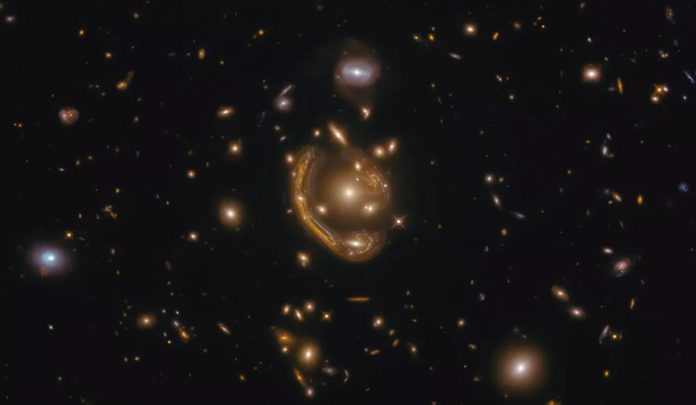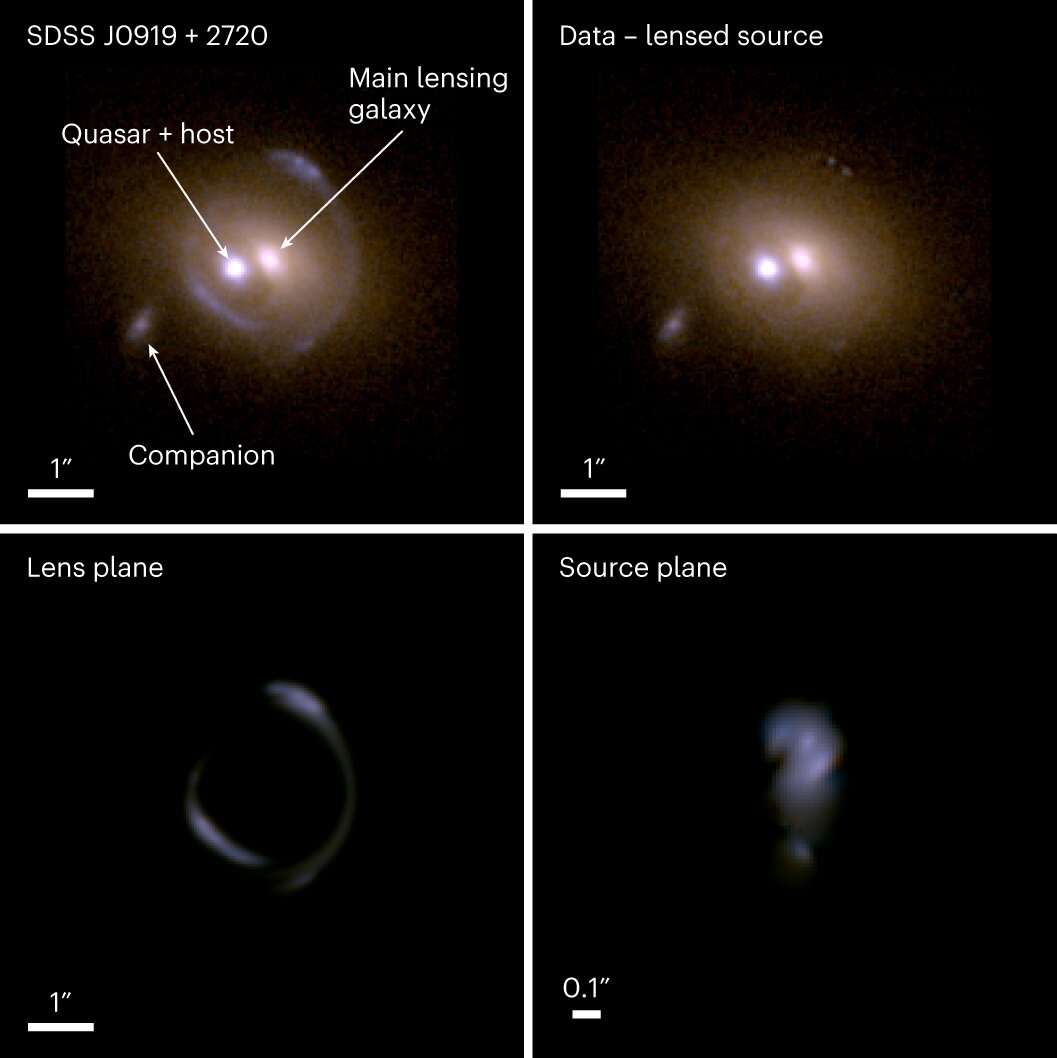
EPFL researchers reveal their ground-breaking technique for determining the mass of a galaxy hosting a quasar through the use of a powerful gravitational lensing method
This method offers precision three times greater than any other existing method. Ultimately, the technique will allow the team from EPFL to study the evolution of galaxies throughout cosmic time.
Studying the evolution of galaxies throughout cosmic time
Understanding the origin of our galaxy and black holes
By understanding the mass of quasar host galaxies, valuable insights into the early universe’s galaxy formation and black hole development can be gained. The findings of this study have been published in the prestigious journal Nature Astronomy.
EPFL astrophysicist Frédéric Courbin emphasises gravitational lensing’s precision and accuracy in obtaining reliable mass estimates of galaxies in the distant Universe, surpassing conventional techniques for measuring the mass of a galax
Courbin remarked, “The unprecedented precision and accuracy achieved with gravitational lensing provide a new avenue for obtaining robust mass estimates in the distant Universe, where conventional techniques lack precision and are susceptible to biases.”
Martin Millon, the lead author of the study, also commented on the value of gravitational lensing, stating that “the masses of host galaxies have been measured in the past, but thanks to gravitational lensing, this is the first time that the measurement is so precise in the distant Universe.”
Combining the gravitational lensing method and quasars
A quasar, a bright phenomenon caused by a massive black hole at the center of a galaxy, is challenging to measure in terms of its host galaxy’s weight due to its distance and intense brightness overpowering nearby objects.
However, the concept of the gravitational lensing method provides a solution. By utilising the gravitational lens effect, where foreground objects bend light from background objects, we can calculate the mass of the lensing object.
Recognising the potential of combining quasars and gravitational lensing, Courbin discovered the idea of determining the mass of a quasar’s host galaxy by identifying a quasar within a galaxy that also acts as a gravitational lens.
The rarity of gravitational lensing quasars
Courbin used the SDSS database to find potential quasars with gravitational lensing.
Gravitational lensing events are rare, happening in only one out of a thousand galaxies, and the chance of a quasar acting as a lens is even rarer at one in a million.
However, the upcoming Euclid mission, set to launch this summer with a Falcon-9 SpaceX rocket, is expected to detect hundreds of these lensing quasars, providing valuable insights into our place in the universe.
In 2010, Courbin observed four candidates with the Hubble Telescope, discovering SDSS J0919+2720, which displayed distinctive gravitational lensing rings.
The image revealed two foreground objects, possibly merging galaxies: a bright quasar without a visible host galaxy on the left, and a main gravitational lensing galaxy on the right.
The rings represented distorted light from a background galaxy.

Understanding the value of computational lens modelling
The gravitational lensing rings in SDSS J0919+2720 can potentially provide information about the mass of the two bright objects.
Galan elaborated on this, “One of the biggest challenges in astrophysics is to understand how a supermassive black hole forms,” adding, “Knowing its mass, how it compares to its host galaxy and how it evolves through cosmic times, are what allows us to discard or validate certain formation theories.”
One of the biggest challenges in astrophysics is to understand how a supermassive black hole forms
Millon also weighed in, stating,
“In the local Universe, we observe that the most massive galaxies also host the most massive black holes at their center. This could suggest that the growth of galaxies is regulated by the amount of energy radiated by their central black hole and injected into the galaxy”.
“However, to test this theory, we still need to study these interactions not only locally but also in the distant Universe.”










